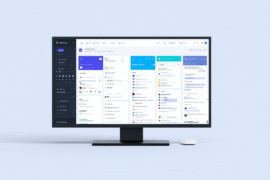This article may contain references to products or services from one or more of our advertisers or partners. We may receive compensation when you click on links to those products or services. Nonetheless, our opinions are our own.
The information presented in this article is accurate to the best of our knowledge at the time of publication. However, information is subject to change, and no guarantees are made about the continued accuracy or completeness of this content after its publication date.
- Preventing Lifestyle Inflation for Long-Term Financial Stability
- Lifestyle Inflation
- Strategies to Control Lifestyle Inflation
- Preventing Lifestyle Inflation Strategies
- Frequently Asked Questions
- What is the first step to dealing with lifestyle inflation?
- Why is it important to review your budget regularly?
- What are some common examples of lifestyle inflation?
- Can lifestyle inflation ever be a good thing?
- How can tracking expenses prevent lifestyle inflation?
- What role does an emergency fund play in managing lifestyle inflation?
- How can automated savings help maintain financial discipline?
- Final Thoughts
- Recommended Reads
Preventing Lifestyle Inflation for Long-Term Financial Stability
Lifestyle Inflation
Definition and Basic Concepts
Lifestyle inflation, also called lifestyle creep, happens when spending increases as income rises. Common examples include upgrading vehicles, dining out frequently, or moving to larger homes. While initially enjoyable, these changes can gradually reduce your ability to save or invest. Setting a budget and making deliberate spending choices help maintain financial stability.
Common Causes of Lifestyle Inflation
Income growth can create a false sense of security, leading to increased spending. Social pressure from peers or social media comparisons can intensify the urge to spend beyond needs. Without clear limits, lifestyle inflation can grow unnoticed and interfere with long-term financial plans.
Noticing Signs of Living Cost Increase in Your Expenses
Key indicators include rising monthly costs without a corresponding increase in savings, frequent reliance on credit cards, or spending on non-essential items. Recognizing these signs early allows for timely adjustments to protect your financial goals.
Tracking Your Expenses
Recording expenses—through budgeting apps or manual tracking—reveals patterns in spending. Regular monitoring helps identify increases in discretionary spending and supports more mindful financial decisions.
Identifying Non-Essential Spending Increases
Distinguishing between needs and wants is critical. Reviewing purchases like luxury items, dining out, or subscriptions can highlight unnecessary spending that contributes to lifestyle inflation. Adjusting habits ensures money is allocated toward goals rather than temporary desires.
Voted "Best Overall Budgeting App" by Forbes and WSJ
Monarch Money helps you budget, track spending, set goals, and plan your financial future—all in one app.
Get 50% OFF your first year with code MONARCHVIP
Strategies to Control Lifestyle Inflation
Set Financial Goals
Financial Goals: Establish measurable objectives such as retirement savings, an emergency fund, or home ownership. Directing extra income toward these goals prevents impulsive spending and strengthens financial security.
Create and Stick to a Budget
Budgeting: List income and essential expenses first, then determine discretionary spending limits. Tracking spending with tools or apps ensures you stay within these boundaries and prioritize savings and investments.
Automate Your Savings
Automated Savings: Schedule regular transfers to savings or investment accounts. Automating deposits reduces the temptation to spend extra income and builds consistent financial discipline.
Build and Maintain an Emergency Fund
Emergency Fund: Save three to six months of expenses in a separate, easily accessible account. This safety net prevents reliance on credit during unexpected financial challenges and keeps long-term plans intact.
Review and Adjust Regularly
Periodic Review: Monitor budgets and spending habits frequently to align with changing circumstances. Adjust limits on discretionary spending and reallocate funds to savings or investments as necessary.
Preventing Lifestyle Inflation Strategies
| Strategy | Key Features | Pros | Cons | Best Use Case |
|---|---|---|---|---|
| Set Financial Goals | Measurable objectives | Provides direction, increases motivation | Requires discipline to follow | Planning long-term savings |
| Create Budget | Track income and expenses | Controls spending, improves awareness | May require frequent adjustments | Managing daily and monthly finances |
| Automate Savings | Regular automatic transfers | Reduces impulsive spending, builds consistency | Needs linked accounts | Saving for retirement or investments |
| Emergency Fund | 3–6 months of expenses | Provides financial security | Slower liquidity | Covering unexpected costs |
| Periodic Review | Monthly or quarterly tracking | Keeps spending aligned with goals | Requires time commitment | Maintaining sustainable financial habits |
Frequently Asked Questions
What is the first step to dealing with lifestyle inflation?
Start by identifying unnecessary expenses. Review recent spending to separate needs from wants. This approach reduces impulsive purchases and helps allocate money toward savings and financial goals.
Why is it important to review your budget regularly?
Regular budget reviews reveal changes in spending patterns and ensure that financial goals guide your decisions. Monitoring your finances helps maintain stability and prevents unnoticed increases in living costs.
What are some common examples of lifestyle inflation?
Typical signs include upgrading to luxury cars, moving to larger homes, subscribing to multiple unused streaming services, frequent dining out, or choosing brand-name items out of habit rather than necessity.
Can lifestyle inflation ever be a good thing?
Yes, when increases in spending are intentional and aligned with values, such as investing in healthier food or reducing commute time. Careful, moderate lifestyle upgrades can enhance quality of life while still maintaining savings growth.
How can tracking expenses prevent lifestyle inflation?
Monitoring all purchases highlights unnecessary spending and encourages mindful choices. Consistent tracking helps adjust budgets, supports savings goals, and prevents spending from rising with income.
What role does an emergency fund play in managing lifestyle inflation?
An emergency fund prevents reliance on credit during unexpected expenses. By covering unplanned costs, it protects long-term savings and ensures financial stability regardless of lifestyle changes.
How can automated savings help maintain financial discipline?
Automated savings transfer money directly into savings or investment accounts, reducing temptation to spend extra income. This consistent approach builds long-term financial security without requiring ongoing active management.
Final Thoughts
Controlling lifestyle inflation strengthens long-term financial health. By setting measurable goals, creating a structured budget, automating savings, and monitoring spending, you can grow wealth while maintaining stability. Small, deliberate actions create lasting habits that ensure increased income supports financial security and future prosperity.

Reviewed and edited by Albert Fang.
See a typo or want to suggest an edit/revision to the content? Use the contact us form to provide feedback.
At FangWallet, we value editorial integrity and open collaboration in curating quality content for readers to enjoy. Much appreciated for the assist.
Did you like our article and find it insightful? We encourage sharing the article link with family and friends to benefit as well - better yet, sharing on social media. Thank you for the support! 🍉
Article Title: How to Prevent Lifestyle Inflation and Keep Your Finances on Track
https://fangwallet.com/2025/08/24/how-to-prevent-lifestyle-inflation-and-keep-your-finances-on-track/The FangWallet Promise
FangWallet is an editorially independent resource - founded on breaking down challenging financial concepts for anyone to understand since 2014. While we adhere to editorial integrity, note that this post may contain references to products from our partners.
The FangWallet promise is always to have your best interest in mind and be transparent and honest about the financial picture.
Become an Insider

Subscribe to get a free daily budget planner printable to help get your money on track!
Make passive money the right way. No spam.
Editorial Disclaimer: The editorial content on this page is not provided by any of the companies mentioned. The opinions expressed here are the author's alone.
The content of this website is for informational purposes only and does not represent investment advice, or an offer or solicitation to buy or sell any security, investment, or product. Investors are encouraged to do their own due diligence, and, if necessary, consult professional advising before making any investment decisions. Investing involves a high degree of risk, and financial losses may occur including the potential loss of principal.
Source Citation References:
+ Inspo
There are no additional citations or references to note for this article at this time.












































